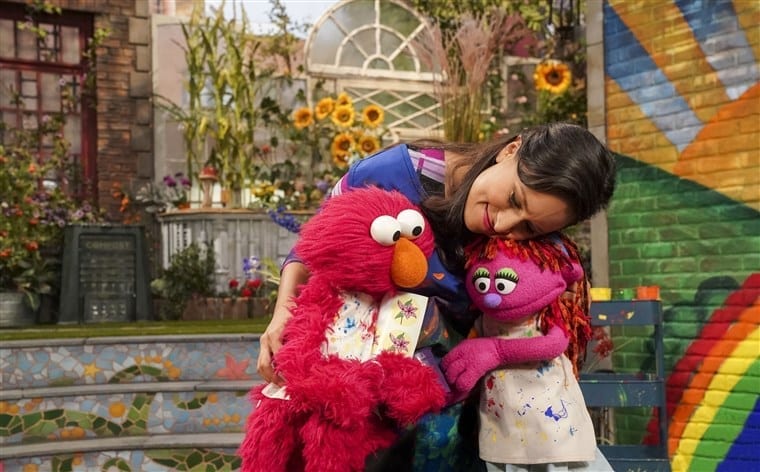For most of us, Sesame Street has played a key role in our childhood memories. The show has exerted vast influence over several generations of children, and has been celebrated for its efforts to educate, nurture, and entertain kids.
Who doesn’t love Big Bird and the crew??
The show has recently gone to even greater lengths to illustrate compassion and a sense of inclusion with their latest character narrative.
Although Lily originally appeared on the show seven years ago, her recent storyline illustrates the issue of homelessness, and it’s a invaluable lesson for child viewers.

Life On The Street- Sesame Street
Lily was introduced years ago with family struggles; she confessed that her family did not have enough to eat. In her current character arc, Lily’s family is homeless, and she shares the reality of shifting between homeless shelters and living with Sofia, a community center worker.
While it may seem like a sobering reality to present to children, therein lies Sesame Street’s brilliance.
It has always attempted to connect to EVERY child, regardless of racial, ethnic, socio-economic status, or learning ability. Our initial reaction may be that it’s too dark of a storyline for a kid’s show- but what about the children watching the show that are currently living in the very same circumstances?
There are children living in homeless shelters. There are children without enough to eat on a daily basis. There are children that experience these difficulties, but they are also viewers of Sesame Street. The character of Lily points out to these children that “others are just like you!”.
Lily’s story also offers encouragement to children that are facing less than ideal living situations.
As The New York Times author Nikita Stewart points out, on Sesame Street, nothing is hopeless. Far from it:
On “Sesame Street,” “homeless” is never uttered because of the stigma surrounding the word; on the show, “H” stands for hope, help, healing and home.
But Lily’s amazing story reaches far beyond merely comforting children in dire straits. It also teaches kids that while other children face situations that may be foreign to their way of life, in the end, all kids are kids.
That’s the genius of Sesame Street’s presentation of characters that may initially appear “different”. The show’s creators have consistently made an effort to welcome ALL people/characters onto Sesame Street (and in a larger sense, into society).
Sesame Street Has Always Set The Example Of Inclusion
Jason Kingsley, a boy with Down syndrome, appeared on several episodes in the late 1970s. His appearance was a major step towards the inclusion of children with various disabilities to be accepted and embraced.
In 1982, actor Will Lee (who played Mr. Hooper) died, and the show’s creators incorporated his passing into a lesson about death on the show. It made a potentially scary topic easier for child viewers to process, and to grasp that their peers may have experienced that kind of loss in their own family.
In the 90’s, Sesame Street featured an HIV-positive character; while it may have seemed like a controversial decision, it was an invaluable lesson for viewers. Some of you may not be old enough to remember the unfair stigma that HIV-positive children received during that era due to misinformation about the diagnosis, but google “Ryan White” and you’ll understand why Sesame Street’s decision was so significant.
The recent creation of Julia, a Sesame Street character with autism, was also an amazing move by the show’s creators. Autism is widespread, and Julia’s presence on the show was a huge step to not only embracing children with autism, but teaching other children all about autism as well. Creator Sherri Westin explains the purpose:
Some people don’t even know whether they’re even supposed to say the word autistic. By opening up a dialogue we are trying to get rid of any discomfort or awkwardness, it’s time to increase understanding.
It’s a microcosm of our ideal society: to increase empathy & understanding, for EVERYONE.
Sesame Street has always been an awesome source of entertaining education for kids. But its lessons reach far beyond merely teaching kids their letters and numbers.
Regardless of who or what you are, Sesame Street is a safe place, literally. Everyone is accepted, regardless of their differences. There is no shame, and no stigma there. It models acceptance for everyone, and we’re thankful for the soft landing place it has been through the years.












Oscar the groych has made his home in a garbage can outside since close to the beginning. I have no problem with teaching kids anything but this is an adult problem to handle